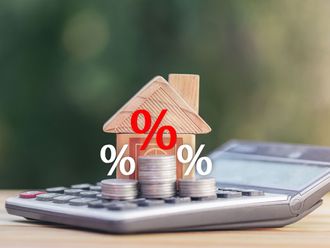While Saudi Arabia and the UAE lead in terms of GCC sukuk issuances for 2013, looking ahead, Oman is interestingly perceived to be the most attractive emerging Islamic finance market for sukuk investment, according to Thomson Reuters Zawya Sukuk Perception and Forecast Study 2014. In fact, lead arrangers expect that most sukuk will be issued from the Sultanate.
Oman simply doesn’t appear within the balance sheets of most Islamic financial institutions unlike the other Gulf states which have had longstanding Islamic finance investment opportunities, Sayd Farouk, global head of Islamic Capital Markets at Thomson Reuters, said,
“Hence, there is a natural desire to invest and allocate some portion of their investment to Oman,” Farouk told Gulf News in an email.
Besides this, he added, Oman has many infrastructure projects in the pipeline and the government has indicated that it would utilise sukuk structures to fund these projects and support the industry in its initial years. In addition, the country has significant liquidity which remains untapped by local investors who would support the issuance of sukuk.
Saudi Arabian and UAE corporate sukuk issuances were worth approximately $6.32 billion (Dh23.2 billion) and $3.35 billion respectively for the first nine months of 2013, compared to $5.21 billion and $4.55 billion for 2012. Total issuances out of Qatar plunged significantly from $5.45 billion in 2012 to $824 million for the first nine months of 2013, due in large part to the exceptionally large $4 billion Qatar government issue in July last year.
Global outstanding sukuk
The study says that total global outstanding sukuk stands at $237 billion, with around $100 billion issued in 2013, and is expected to grow to $749 billion by 2018. The gap between supply and demand is to peak in 2014, amounting to $230 billion, and is then expected to go down steadily as issuance is predicted to reach $187 billion by 2018.
In terms of portfolio allocation, the investor audience of the survey said that of the 50 per cent invested in Islamic finance investments, 25 to 35 per cent will be in sukuk.
As and when the gap closes — not to happen in the short to medium term — it would, in fact, be good if supply outstrips ‘core Islamic financial institution’ demand, as these institutions would not fear letting go of their holdings, Farouk said.
“As a result, there will be more buy and sell of the assets in the secondary market, which will enhance liquidity, a feature very badly needed in the sukuk market,” he added.
Also, based on the survey 2014, 55.7 per cent of investors and traders are expecting to move around 20 per cent of their portfolio from fixed income (bonds and sukuk) to equities in 2013-2014, given the equity market recovery.
Consistent high demand
“Despite the fact that this might slow down sukuk demand growth, most Islamic investors have few alternative fixed income investment options to diversify their source of income other than sukuk. Given the consistent high demand, sukuk issuance is expected to grow in the coming years, but with a lower growth rate,” Farouk said.
In the coming years, amid a rising interest rate environment, the demand for money market instruments will be, as usual, higher than longer term papers such as bonds and sukuk.
However, Farouk pointed out that after the introduction of Islamic Liquidity Management Corp (IILM) short-term sukuk, the Islamic papers market is expected to deepen to cover both short and long-term markets which, in turn, will also improve the liquidity and tradability of the sukuk market.












